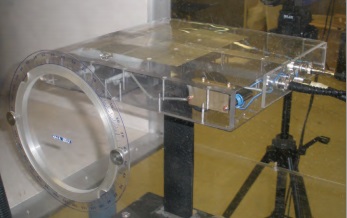Chapter: Efficient Aerospace Vehicle Technologies, new invention technology, Research project papers,
Electromagnetic Flow Control to Enable Natural Laminar Flow Wings

Electromagnetic Flow Control to Enable
Natural Laminar Flow Wings
A research team has developed a solid-state
electromagnetic device that, when embedded along the leading edge of an
aircraft wing, can disrupt laminar air flow on command. The methodology employs
a combination of high-voltage alternating and direct current electric fields
and high-strength magnets to generate cross flow. This cross flow either forms
vortices or trips the flow to turbulent (depending on conditions), energizing
the boundary layer to keep the flow attached and prevent stall. Presumed usage would
be for an aircraft to activate the device at takeoff, turn the device off after
gear-up and initial climb-out, then turn it back on for descent and landing.
Using natural laminar flow principles in aircraft design can reduce fuel burn
by 6 to 12 percent.
Work
to date: The device has been tested on a flat plate in
a wind tunnel.
Looking
ahead: The group plans to test the device on a
remotely operated integrated drone aircraft and is targeting 2015
for tests on a Prototype Technology Evaluation Research Aircraft (PTERA).
Partner: Brigham
Young University provides a wind tunnel and machining facilities to
build test articles.
Benefits
Efficient: Enables fuel
reduction
Simple: Works
with no moving parts, simplifying fabrication and maintenance
Improves safety: Facilitates
safer takeoffs and landings
Applications
Aircraft wings
Industrial
fluid processing Heat transfer processes
Efficient Aerospace Vehicle Technologies
Increasing efficiency in aerospace systems is
a key goal across the spectrum of NASA operations.
Armstrong researchers are constantly striving
to build efficiency into all phases of flight projects, through development,
fabrication, and operations processes.
From a new wing design that could
exponentially increase total aircraft efficiency to a novel test stand for
single-engine electric aircraft, our researchers are finding unique solutions
that increase efficiency.
Related Topics